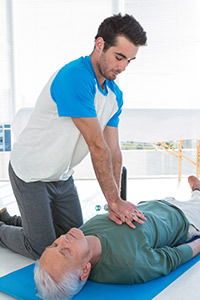What is cardiopulmonary resuscitation (CPR)?

Cardiopulmonary Resuscitation (CPR) is a way to save the life of someone who is in cardiac arrest. It is a fairly simple technique that anyone can learn. The key part of CPR is chest compressions, which keep blood flowing to vital organs until a regular heartbeat returns. The technique was formally developed in 1960, but, it is reported that in 1903, Cleveland Clinic co-founder, Dr. George Crile, was the first used external chest compressions to resuscitate someone.
Why is CPR important?
Cardiac arrest is a leading cause of death in the United States. Most often, there is a sudden halt in heart function caused by an electrical problem that causes the heart to get out of rhythm (arrhythmia). Cardiac arrest keeps the body’s vital organs, including the brain, from getting oxygen-rich blood.
Time is of the essence! The situation can cause death within minutes if the person in cardiac arrest does not get treatment. The chance of surviving goes down 7-10% every minute the person’s heart does not beat normally.
More than half of all people who have cardiac arrest outside of a hospital do not get help right away. If a person does get CPR right after they go into cardiac arrest, their chance of survival can double or even triple.
How do I learn CPR?
The American Heart Association offers many types of CPR training.
What is an AED?
Many public places have an automated external defibrillator (AED) for use in emergency situations. The AED can be used by anyone. It delivers a life-saving shock to a person in cardiac arrest. When used in the right way, the shock restores a normal heart rhythm. Most AEDs have easy-to-use instructions on them, but a 911 dispatcher can also help you use the AED.
How can I help if I am not trained in CPR?
If you are not trained in CPR but are in a situation where someone is in cardiac arrest, call 911 and do chest compressions until emergency help arrives. This is called "Hands-Only CPR." Make sure the scene is safe before you start CPR. The American Heart Association recommends doing the compressions to the beat of “Staying Alive” (100 to 120 times per minute). The 911 dispatcher can guide you through the steps to take until paramedics get there.

How to do chest compressions
- Keep arms straight.
- Press HARD and FAST.
- 100-120 Compressions per minute (to the tune of Staying Alive).